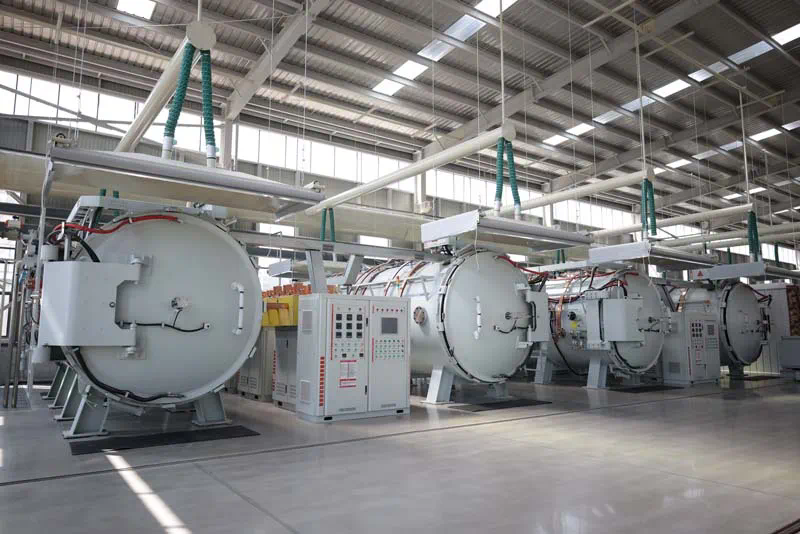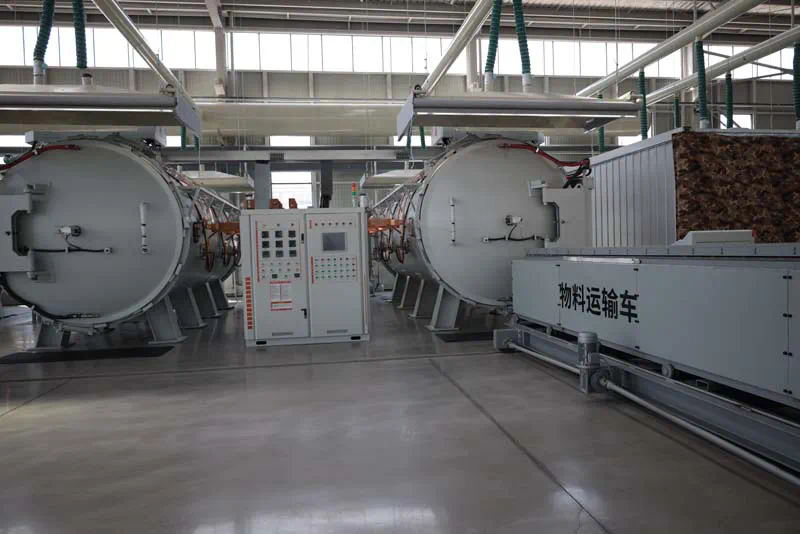The Silicon-Carbide Crucible Market Update: Industry Trends and Innovations


The silicon carbide (SiC) crucible market is experiencing a period of remarkable growth and innovation. Silicon carbide crucibles are essential in various industries, particularly in the field of metallurgy, semiconductor manufacturing, and advanced ceramics. These crucibles are designed to withstand extreme temperatures and are made from silicon carbide, a compound known for its durability and thermal resistance. Over the past decade, the market for silicon carbide crucibles has expanded due to advancements in material science, increased demand from industries such as aerospace and automotive, and the growing focus on renewable energy sources. In this article, we silicon carbide crucible australia will explore the current trends, innovations, and future projections for the silicon carbide crucible market.
Introduction to Silicon-Carbide Crucibles
Silicon carbide crucibles are high-performance containers used in high-temperature applications, particularly for melting and holding metals such as aluminum, gold, silver, and other precious materials. The primary advantages of SiC crucibles include their ability to resist oxidation, high thermal conductivity, and ability to withstand extreme temperatures (up to 1600°C or higher). These qualities make them indispensable in processes where metals or alloys must be melted, mixed, and processed under intense heat.
The silicon carbide crucible market has evolved significantly over the past few decades. Initially, these crucibles were primarily used in metal foundries, but today, they play a critical role in several advanced industrial processes, such as semiconductor manufacturing, material research, and renewable energy production.
Growth Drivers of the Silicon-Carbide Crucible Market
1. Increased Demand in Metal Industries
The metal casting industry remains one of the primary end-users of silicon carbide crucibles. As industries such as automotive, aerospace, and construction continue to expand, the demand for high-quality metals has risen. Silicon carbide crucibles are preferred in these sectors due to their excellent heat resistance and durability. The aerospace industry, in particular, requires high-performance materials that can withstand extreme conditions, making SiC crucibles ideal for the production of superalloys and specialized alloys used in jet engines and other critical components.
2. Growth in Semiconductor Manufacturing
The rapid advancement of semiconductor technology has also contributed significantly to the growth of the silicon carbide crucible market. Silicon carbide is increasingly being used in the production of semiconductors, particularly for high-power devices in electric vehicles (EVs), power grids, and renewable energy applications. Silicon carbide-based semiconductor components are known for their efficiency in power conversion and their ability to operate in high-temperature environments.
As the demand for semiconductor devices grows, especially in electric vehicles, consumer electronics, and renewable energy systems, the need for high-quality SiC crucibles to melt and process high-purity silicon carbide materials has surged.
3. Renewable Energy and Electric Vehicles
The transition to renewable energy sources and the rise of electric vehicles (EVs) are significant drivers of growth in the silicon carbide crucible market. Silicon carbide is a key material used in power electronics, especially in the manufacturing of power semiconductors for electric vehicles and solar inverters. As governments around the world impose stricter emissions regulations and promote clean energy solutions, the demand for SiC-based components in energy-efficient applications has increased.
The use of silicon carbide in electric vehicle charging infrastructure and renewable energy grids further strengthens the need for silicon carbide crucibles in manufacturing processes. The ability of SiC components to operate efficiently at high voltages and temperatures is a crucial factor in the adoption of this technology across various sectors.
4. Advanced Materials and Research Applications
Another emerging trend is the use of silicon carbide in the development of advanced materials for research purposes. Silicon carbide crucibles are used in high-temperature applications within materials science research, including the synthesis of new compounds, materials testing, and the production of high-performance ceramics. As scientific research becomes more sophisticated, the demand for specialized crucibles made of materials like silicon carbide is growing, as they offer superior performance compared to traditional crucibles made from graphite or other materials.
Key Market Trends and Innovations
1. Technological Advancements in Manufacturing
The production of silicon carbide crucibles has also evolved with the advancements in manufacturing technology. Traditional methods of producing SiC crucibles were time-consuming and costly, but recent innovations in material processing and manufacturing techniques have made the production process more efficient. This includes the development of advanced sintering techniques, which allow for the creation of crucibles that are not only stronger but also more thermally efficient.
Another key innovation has been the development of SiC crucibles with improved geometries and designs that enhance their performance in specific industrial applications. For example, some manufacturers are designing crucibles with specialized coatings that further increase their thermal conductivity and resistance to oxidation, extending their operational lifespan.
2. Customization and Specialized Designs
As industries demand more specialized products, manufacturers of silicon carbide crucibles are increasingly offering customized solutions tailored to specific needs. These customized crucibles can be designed for particular temperature ranges, chemical environments, or mechanical stresses, offering enhanced performance in demanding applications. For instance, in the electronics industry, crucibles may be made with ultra-pure silicon carbide to ensure the highest level of material purity during the melting process.
3. Recycling and Sustainability
With growing awareness of sustainability and resource conservation, the recycling of silicon carbide crucibles has become an important topic within the industry. Although SiC is known for its durability, crucibles eventually wear out or crack after prolonged use. Manufacturers are now focusing on developing methods to recycle or refurbish these crucibles, thus reducing the environmental impact of their production and disposal. Recycling SiC crucibles also offers a way to reduce costs for manufacturers, as recycled SiC can be reprocessed and used in the production of new crucibles, enhancing the overall sustainability of the industry.
4. Expansion of Global Markets
Geographically, the silicon carbide crucible market has expanded beyond traditional regions such as Europe and North America. Emerging economies in Asia-Pacific, particularly China and India, are witnessing a surge in industrial growth, which is boosting the demand for SiC crucibles. These regions are experiencing rapid development in sectors such as automotive manufacturing, electronics, and metals production, all of which rely on the high-performance capabilities of silicon carbide crucibles.
As industries in these regions modernize their infrastructure and adopt more energy-efficient technologies, the demand for SiC-based products, including crucibles, is expected to continue to rise. Furthermore, the increasing number of industrial clusters in Asia-Pacific will likely lead to more localized manufacturing of SiC crucibles, reducing lead times and transportation costs.
Market Challenges and Opportunities
1. Raw Material Availability
One of the challenges faced by the silicon carbide crucible market is the availability of high-quality raw materials. Silicon carbide itself is a synthetic material, and its production requires specific raw materials such as silica and carbon. Fluctuations in the prices of these raw materials can impact the overall cost structure of SiC crucibles.
However, there are opportunities in addressing this challenge. The development of alternative materials or processes to create high-purity silicon carbide could reduce dependence on traditional raw material sources and improve the cost-efficiency of crucible production. Researchers are exploring various ways to enhance the material’s performance by incorporating additives or developing new SiC variants that can provide higher thermal conductivity, improved corrosion resistance, or enhanced mechanical strength.
2. Competition from Alternative Materials

While silicon carbide crucibles offer many advantages, they face competition from other materials such as graphite and ceramic crucibles. Graphite crucibles are particularly popular in industries where high-purity metal melting is required, and they can be more cost-effective compared to SiC crucibles. However, graphite crucibles have limitations in terms of thermal conductivity and oxidation resistance, which silicon carbide can outperform.
In response to this competition, SiC crucible manufacturers are continuously innovating to offer more efficient, durable, and cost-effective products that provide value over traditional alternatives.
Future Outlook for the Silicon-Carbide Crucible Market
The silicon carbide crucible market is poised for significant growth over the next decade, driven by technological innovations, expanding industrial applications, and the increasing demand for advanced materials. As industries such as metal casting, semiconductor manufacturing, and renewable energy continue to grow, the need for high-performance materials like silicon carbide will remain strong. Additionally, the rise of electric vehicles and renewable energy grids presents new opportunities for SiC crucible manufacturers, creating a robust future outlook for the industry.
In conclusion, the silicon carbide crucible market is evolving rapidly, supported by ongoing technological advancements and the growing demand from key industries. As innovation continues to drive the sector forward, the market for SiC crucibles will remain an essential component of high-temperature processing in numerous industrial applications.
